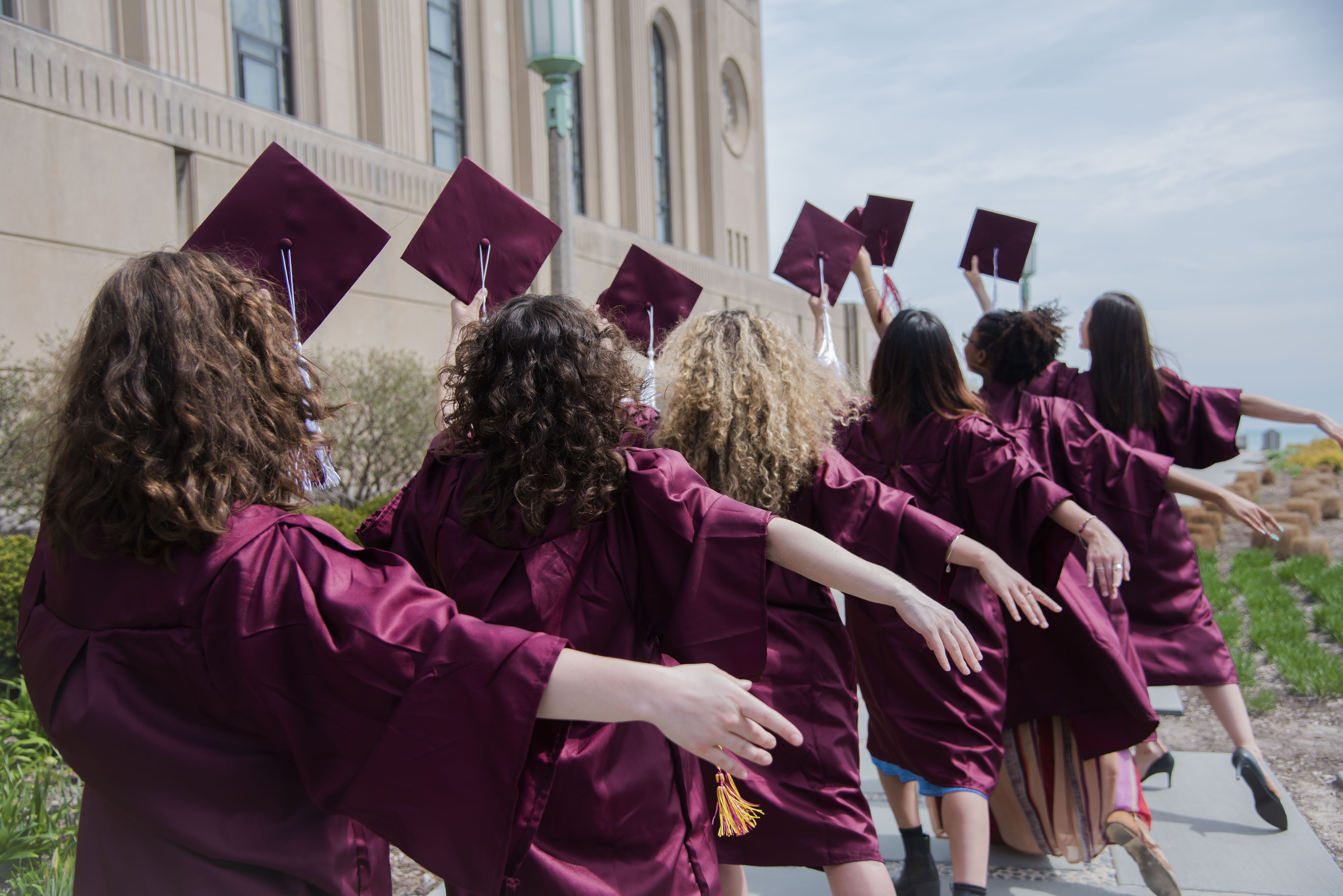
Loyola's Dance program offers conservatory-level training within the context of Loyola's liberal arts curriculum. The dedication, discipline, and passion needed to complete a degree in dance can open the doors to a myriad of opportunities, whether in the dance community or beyond. Here are a few career possibilities for a dancer:
Performer
- Concert
- This field encompasses work typically done by dance companies and can be performed in a variety of venues. Concert work includes ballet, modern, and contemporary work, as well as genres such as tap, jazz, and hip hop. Loyola’s intentional ballet training and commitment to contemporary styles readies our dancers to take on this field.
- Musical Theatre
- An artist working in musical theatre combines dancing, acting, and singing all in one show. Artists in this field can go on to perform, choreograph, and even direct musicals. Loyola works with our Theatre department to get dancers interested in musical theatre into the annual musical and supports these dancers’ training.
- Commercial
- Dance has permeated our daily lives, and commercial dance is the way it’s happened. Music videos, backup dancers, TV commercials, dance festivals, movies, independent projects…all of these require dancers that have solid training and the ability to adapt quickly, which Loyola teaches no matter the subject area.
Choreographer
Our dancers have numerous opportunities to choreograph throughout the year, whether through the annual Dance Composition Showcase, the annual American College Dance Association Conference, or through local projects in Chicago. Access to the city allows our dancers/emerging choreographers the ability to collaborate with other dancers, filmmakers, singers, actors, etc that they can create dance works with. Our dancers go on to choreograph for dance companies, musicals, plays, studios, music videos, independent projects, and more.
Costume Designer
As a dancer, you have likely worn numerous costumes over the course of your life. You know what feels good to practice and perform in, and you have the unique advantage of understanding how clothing should move with the body. While at Loyola, dancers have the opportunity to learn about costume design and craft, and even work in the Loyola costume shop. That experience can lead to designing and constructing costumes, or even your own line of dance wear.
Dance Educator
- School Teacher
- The City of Chicago has made a tremendous investment in arts education, calling for certified dance faculty to teach in both public and private schools. There is a significant demand for dance educators who have completed teacher certification.
- Studio Teacher
- Most childhood dance instruction takes place in private dance studios and academies. Dancers who can teach a variety of techniques to multiple age groups are in high demand. Our Dance Pedagogy class provides Loyola students with a framework for planning, development, and best practices to prepare them for community teaching opportunities.
- Teaching Artist
- A teaching artist is professional artist who conducts workshops, both short range and long range, within an educational setting on a variety of themes.
Arts Administrator
- Studio Director
- The liberal arts education at Loyola prepares students for leadership roles in the dance community. One area of success for our graduates comes in dance studio ownership or directorship. These positions require a very comprehensive view of dance as an art form and service business.
- Company Administrator
- Dance administration includes(but is not limited to) company management, grant writing, performance production, artist contract management, partnership expansion, and non-profit board development.
- Dance Marketer
- This role is closely linked to other arts administration positions, and is related to graphic design, advertising, and communications. This caninclude designing and maintaining web pages, designing flyers and other promotional materials, event planning, or social media promotion.
Dance Photographer/Videographer
As a dancer, you have already been on the other side of the lens. The awareness of movement and the positions of the body gives dancers the ability to predict great photo moments or video framing.
Therapist
- Dance Movement Therapist
- The psychotherapeutic use of movement to promote emotional, social, cognitive, and physical integration of the individual, for the purpose of improving health and well-being.
- Physical Therapist/Dance Medicine Specialist
- Dance Majors graduate with abundant anatomy and kinesiology knowledge. Injuries in dance are unfortunately common, and your ability to understand a dancer's body as a therapist or doctor is a key advantage
Yoga/Pilates/Somatic Teacher
Dancers gain numerous transferable skills over the course of their training, including yoga, pilates, gyrotonics, and Feldenkreis. All of these movement practices are great fields for a trained dancer.
Continuing Education
- Master of Fine Arts
- An MFA is the terminal degree granted in performance studies, either in dance or choreography.
- Master in Education
- An M.Ed degree may provide public school teaching certification or prepare you to work in other public institutions.
- Dance Kinesiology
- The precise nuances of human movement and anatomy are studied in fine detail and experimentation and publication.
- Dance History and Criticism
- This field has a Ph.D as the terminal degree. Writers author books, articles, blogs and reviews of dance performance or dance studies.
- Professional Studies
- Several of the most internationally significant concert dance companies offer professional training programs, which may be commensurate with an MFA.
- Doctor of Physical Therapy
- Acceptance into DPT programs is very competitive; however, a dance major is a highly desirable foundation for physical therapy.



